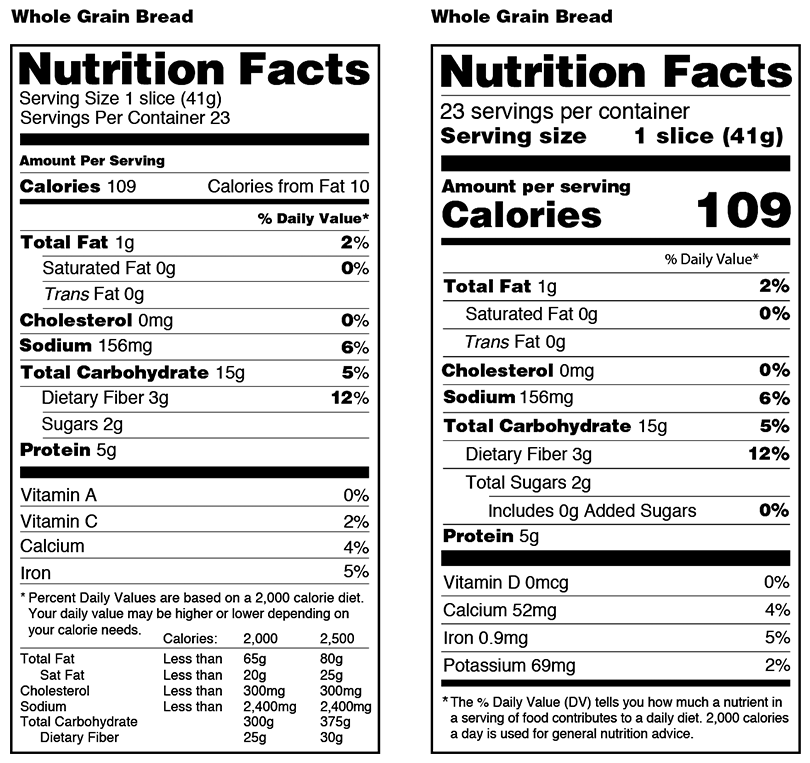Reading nutrition facts labels can help you make healthy choices.
Serving size:
All nutrition facts on the label are for one serving. Always check the serving size and servings per container — if you eat more or less than the serving size, be aware that the numbers for calories and the other nutrients listed will change accordingly.
Total Fat:
Choose foods with 3 grams or less per 100 calories.
Saturated fat:
Choose foods with 1 gram or less per 100 calories.
Sodium:
Limit your intake to 140 milligrams per serving (2,300 milligrams or less per day).
Added Sugars:
Take in no more than 10 grams per meal (25 grams or less per day).
Fiber:
Choose foods with 3 to 5 grams or more per serving.
Tips for making healthy options
1. Check the serving size
Are there multiple servings per container? If you eat more than one serving of the food, you’ll need to consider the nutrients on the label. For instance, if there are 100 Calories per serving and you eat 3 servings, it adds up to 300 Calories total.
2. Opt for heart health
- Choose foods that are lower in total fat, saturated fat, cholesterol, and sodium (salt).
- Choose foods with zero grams of trans fat.
3. Know your total carbs
This number tells you how many carbs (including grams of sugar) are in one serving of the packaged food.
If you’re carb counting or following a meal plan, you’ll know 15 grams of carbs is one “carb serving” but this might not be the same on the nutrition label serving size. Depending on how many carbs are in each serving of the food, you may need to adjust your portions — your meal plan serving may not match the suggested serving size on the label.
4. Is it nutritionally valuable?
Choose foods that are nutrient dense and good sources of fiber. Fiber is the indigestible part of plants. Foods that are high in fiber include beans, broccoli, avocado, and whole grains.

